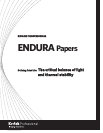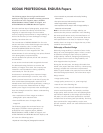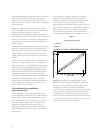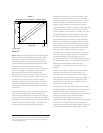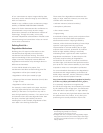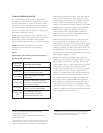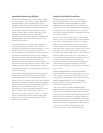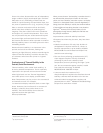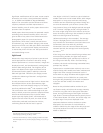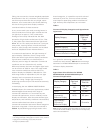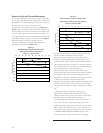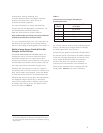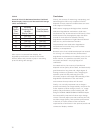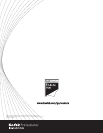
Balance of Light and Thermal Mechanisms
As mentioned earlier, balancing the rate of dye fade
due to light degradation and dye fade due to thermal
degradation is important in optimizing print life. This
i
s especially so in the portrait and social
environment, where light levels are low.
Figures 3
a
nd 4
s
how examples of the relationship of light and
thermal fade. (For ease of illustration, the data come
f
rom an earlier generation of Kodak color papers.) In
low-light situations, the two degradation mechanisms
contribute nearly equally to overall print life
(Figure
3)
. Under higher-intensity lighting, such as
commercial displays, the light-fade mechanism
outweighs thermal fade
(Figure 4).
Figure 3
Relationship of Light and Dark Fade
with Typical Home Illumination
Years to a Given Fade
Figure 4
R
elationship of Light and Dark Fade
with Typical Commercial Illumination
Years to a Given Fade
Through the mid-1970s, thermal stability had been
the prime fade mechanism. Then product
improvements permitted a catch-up of thermal
stability to light stability. By the mid-1990s, many
manufacturers had achieved a good balance between
light and thermal fade. However, for various reasons,
the industry paid more attention to the light-stability
improvements than to thermal-stability
improvements. This is unfortunate for both the
portrait/social and the commercial markets, because
all images in both environments undergo thermal
degradation, whether displayed in the light or stored
in the dark. Especially in the portrait/social
environment (including both consumer snapshots and
professional portraits), the vast majority of images
are stored in the dark—in albums, shoeboxes, closets,
etc.
18
In balancing light and thermal stability, it is
important to evaluate the combination of both
effects, rather than just one or the other individually.
An improvement in light stability without a
c
orr
esponding improvement in thermal stability, or
vice versa, will not necessarily improve print life.
Kodak has long recognized the need to improve both
light and thermal stabilit
y
, and it was a key factor in
creating the new dye technologies that are now used
in KODAK PROFESSIONAL ENDURA Papers. The
r
esult of nearly six y
ear
s of r
esear
ch, t
echnology
8075706560555045403530
-0.8
-0.7
-0.6
-0.5
-0.4
-0.3
-0.2
-0.1
0
Loss from 1.0 density
Dark
1
20 Lux
Lux
D
ark + 120
18
D.S. Hachey, unpublished report.
10
Loss from 1.0 density
5
00 Lux
Dark +
5
00 Lux
Dark
0
-
0.1
-0.2
-0.3
-
0.4
-
0.5
-0.6
-
0.7
-0.8
30 35 40 45 50 55 60 65 70 75 80



